Bringing Felkel´s table into space
2018, 16 Notations of 59 X 42 cm and sound piece of 4:34 min.
Twin touch markers on markers paper. Voice: Heidi Gregory
2018, 16 Notations of 59 X 42 cm and sound piece of 4:34 min.
Twin touch markers on markers paper. Voice: Heidi Gregory
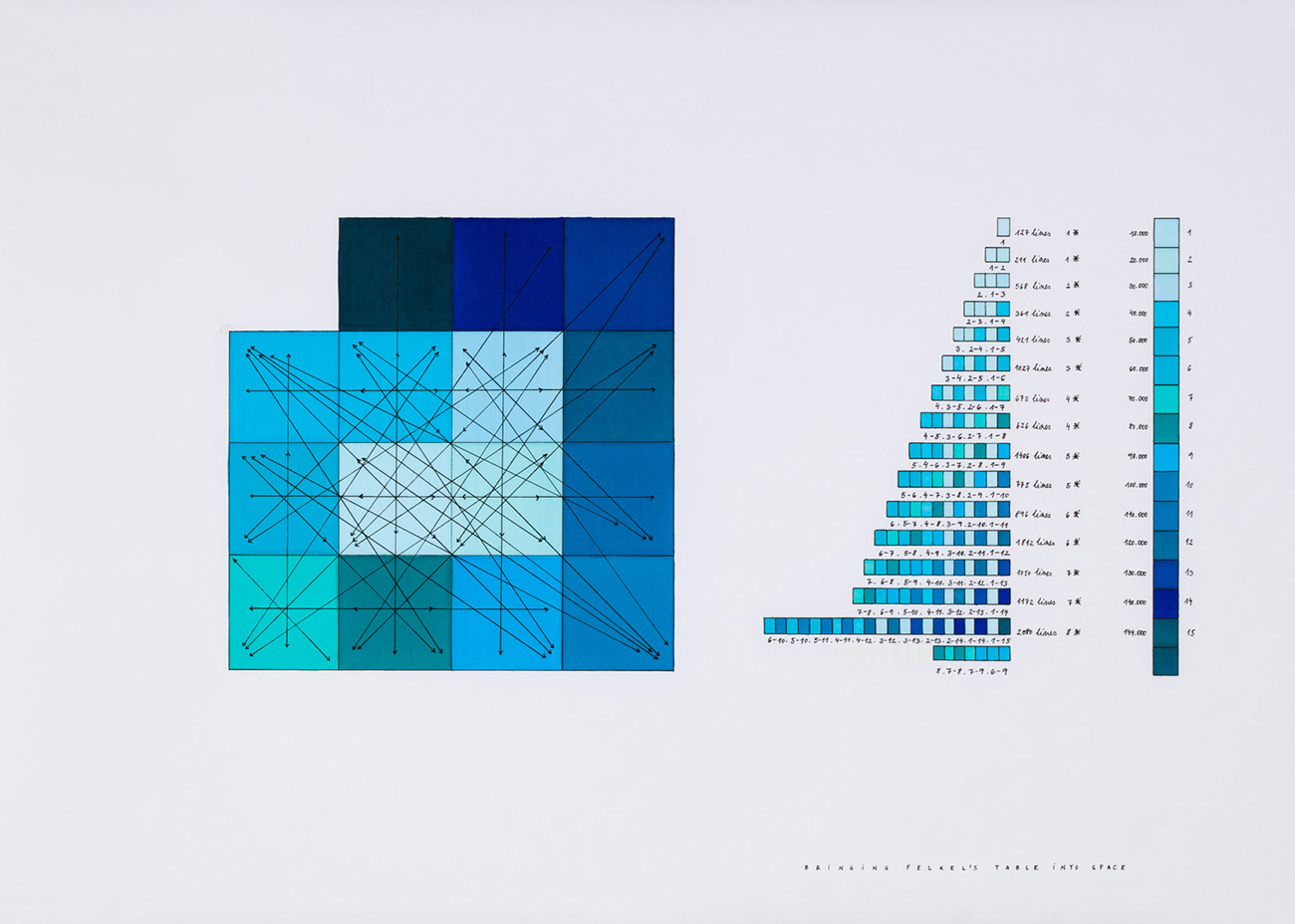
.jpg)
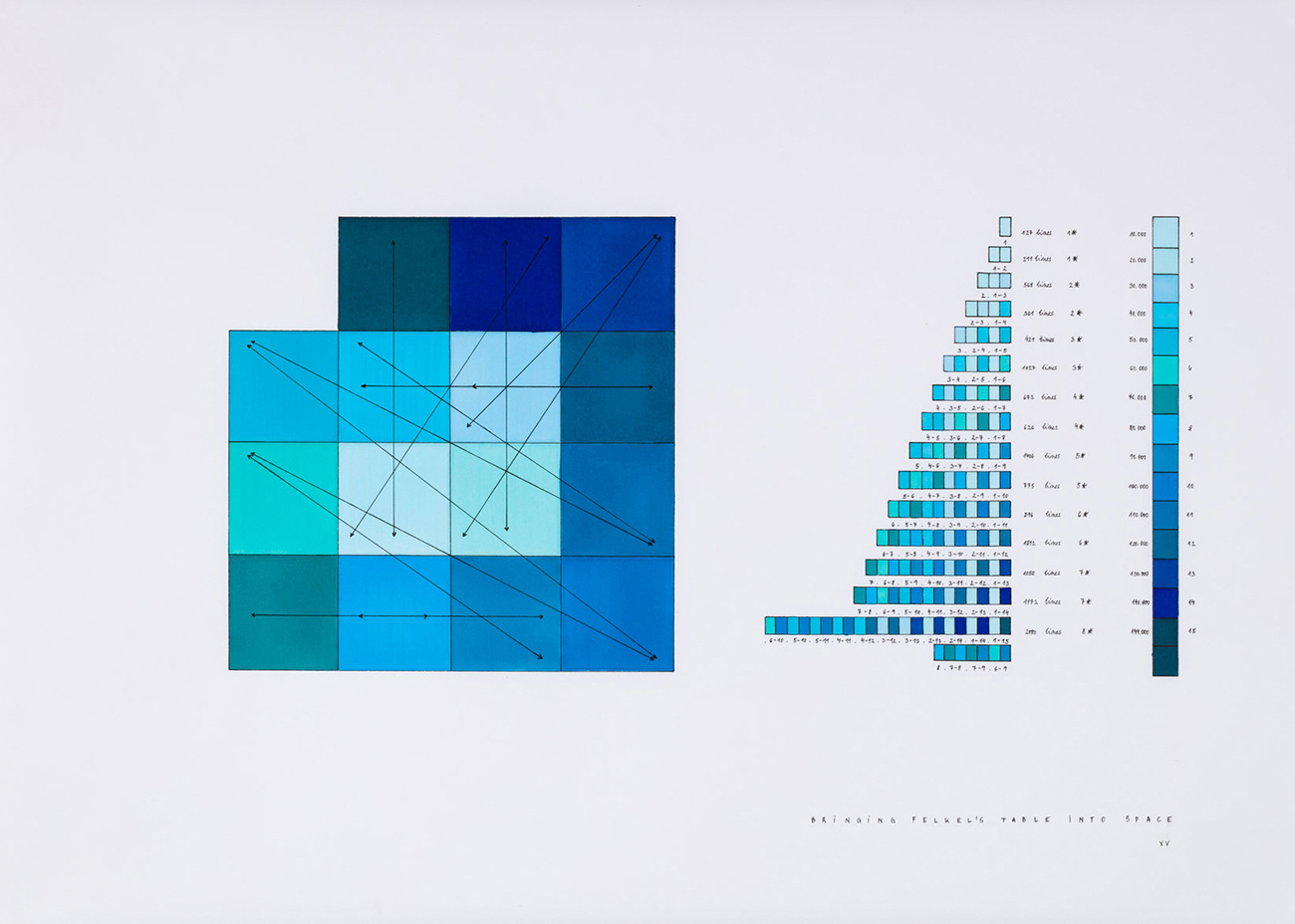
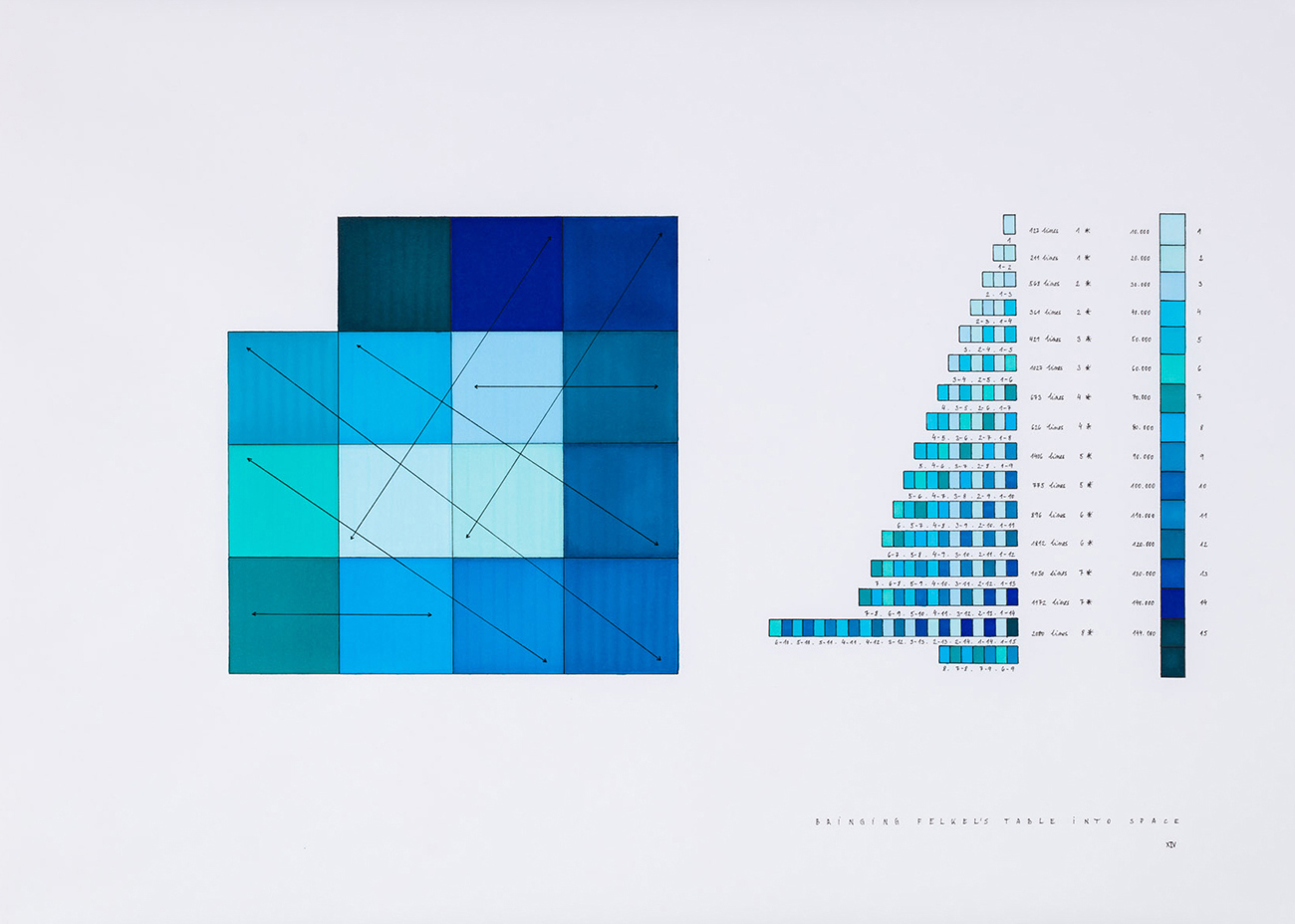
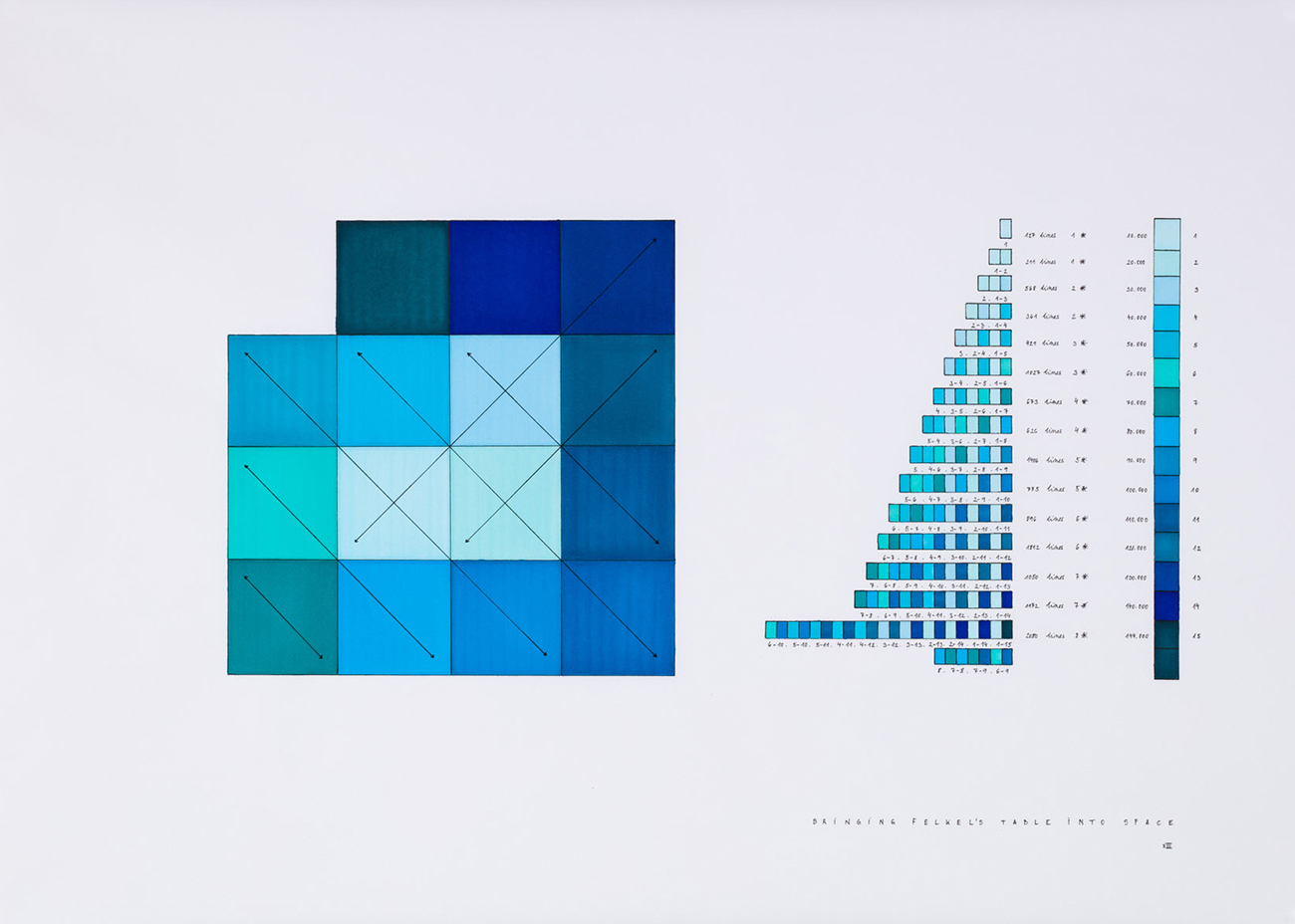

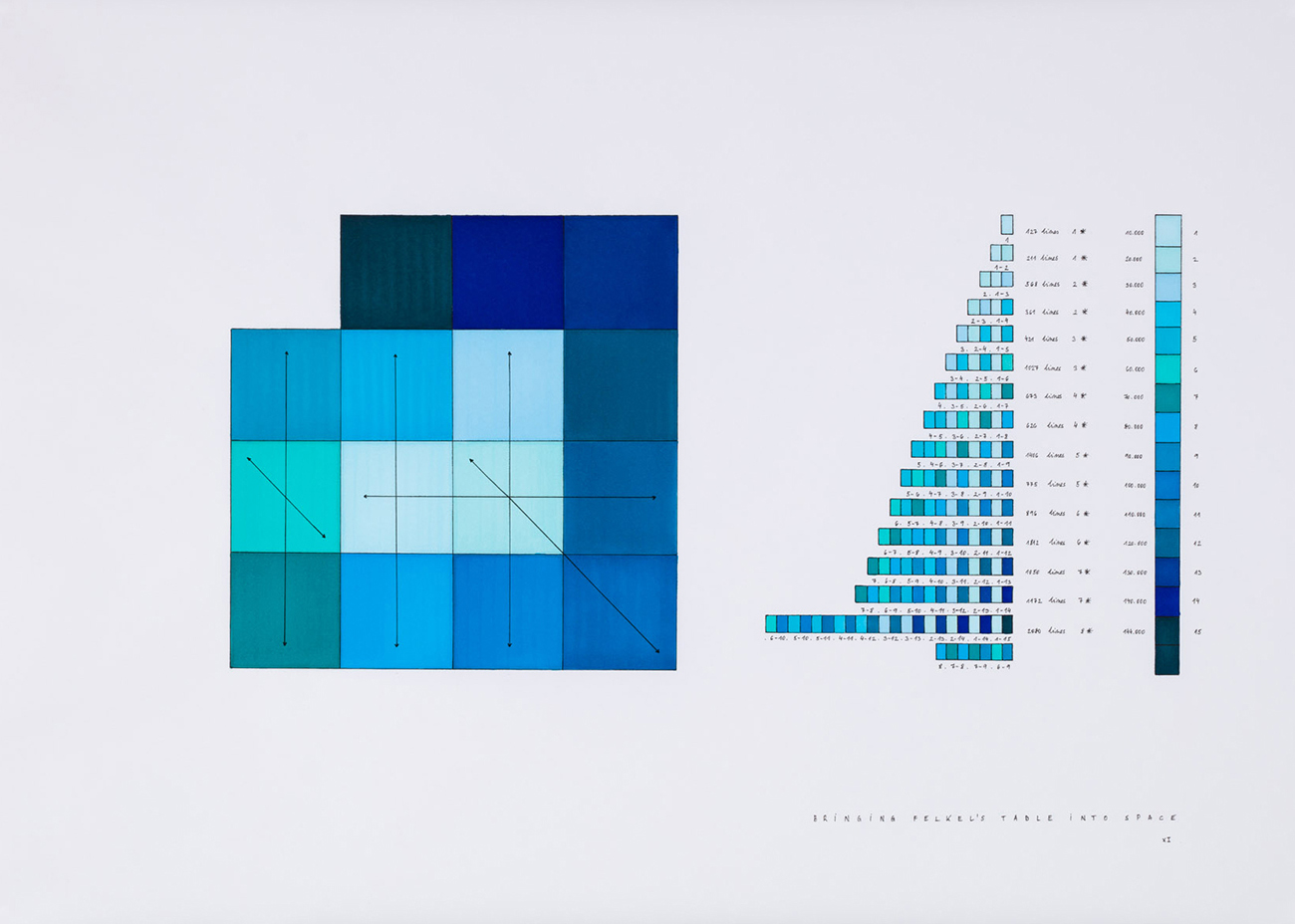
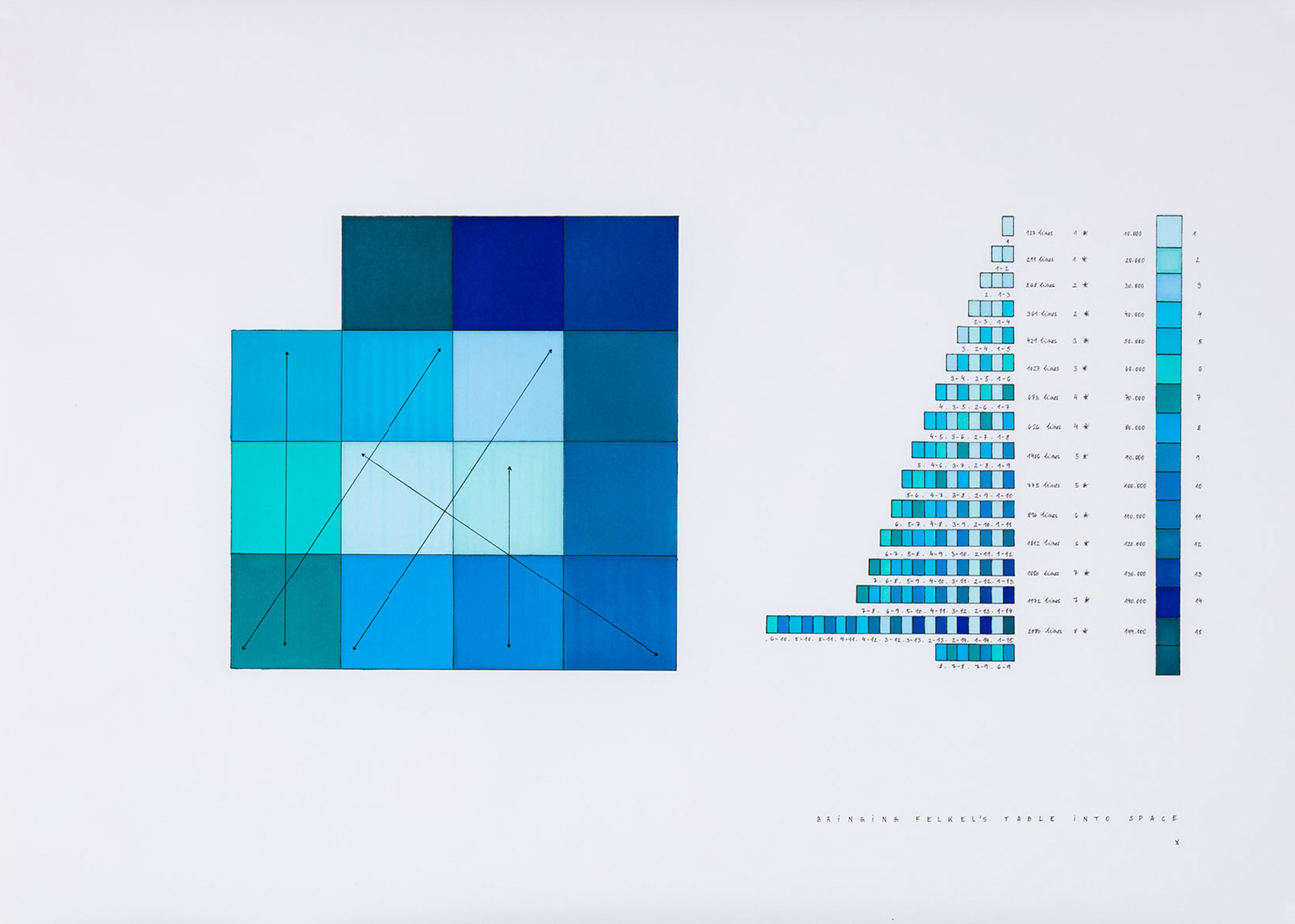
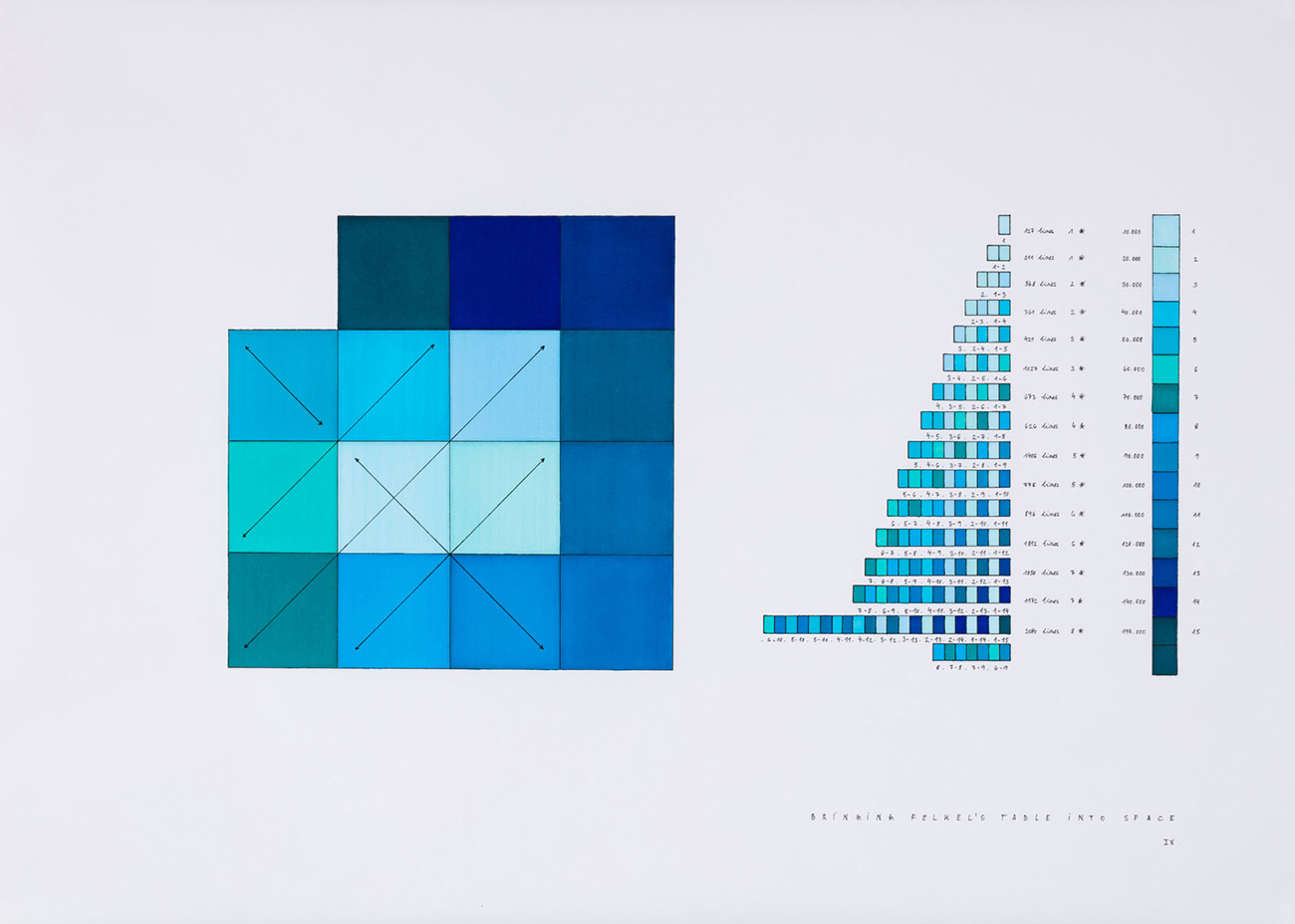

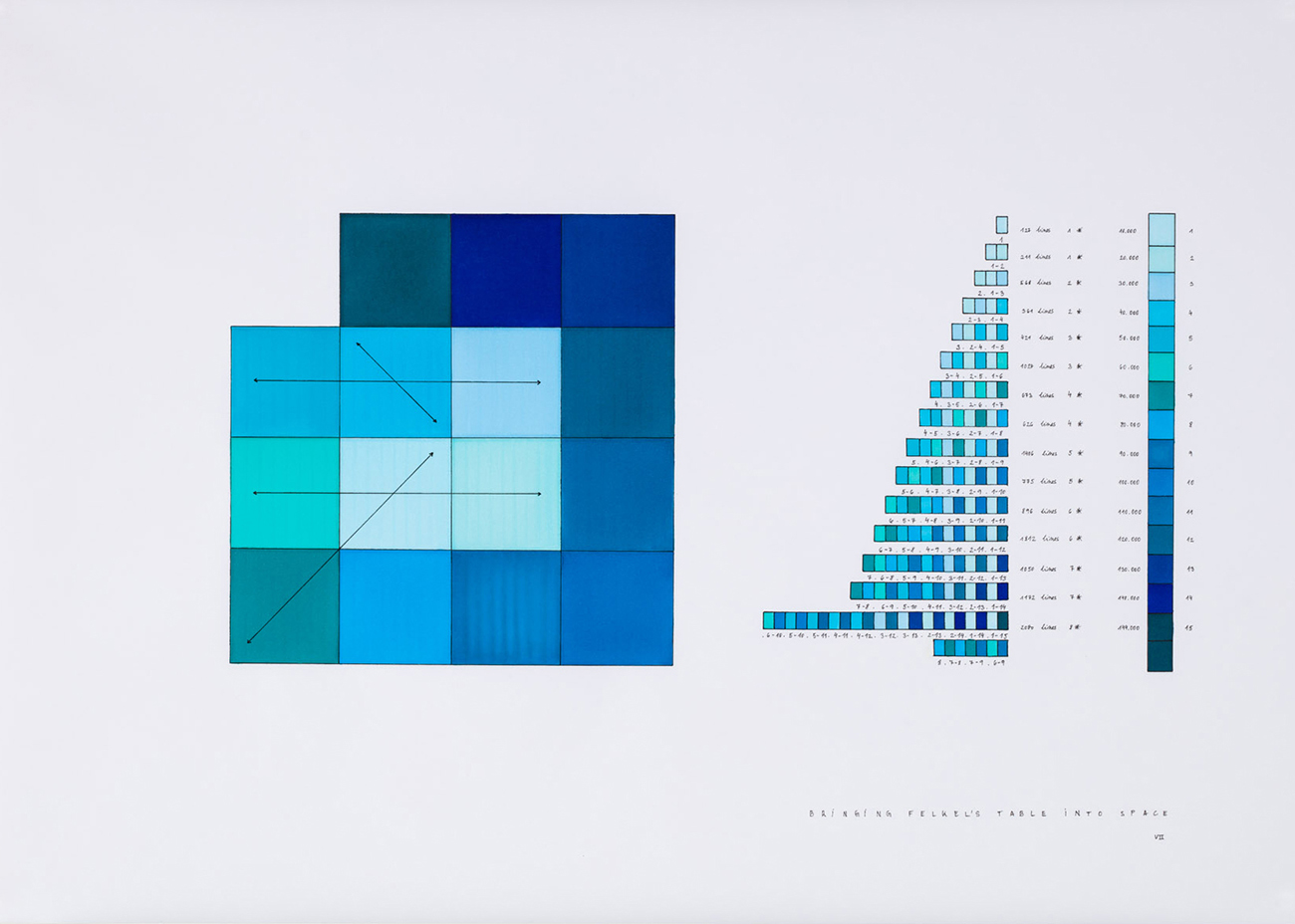
.jpg)
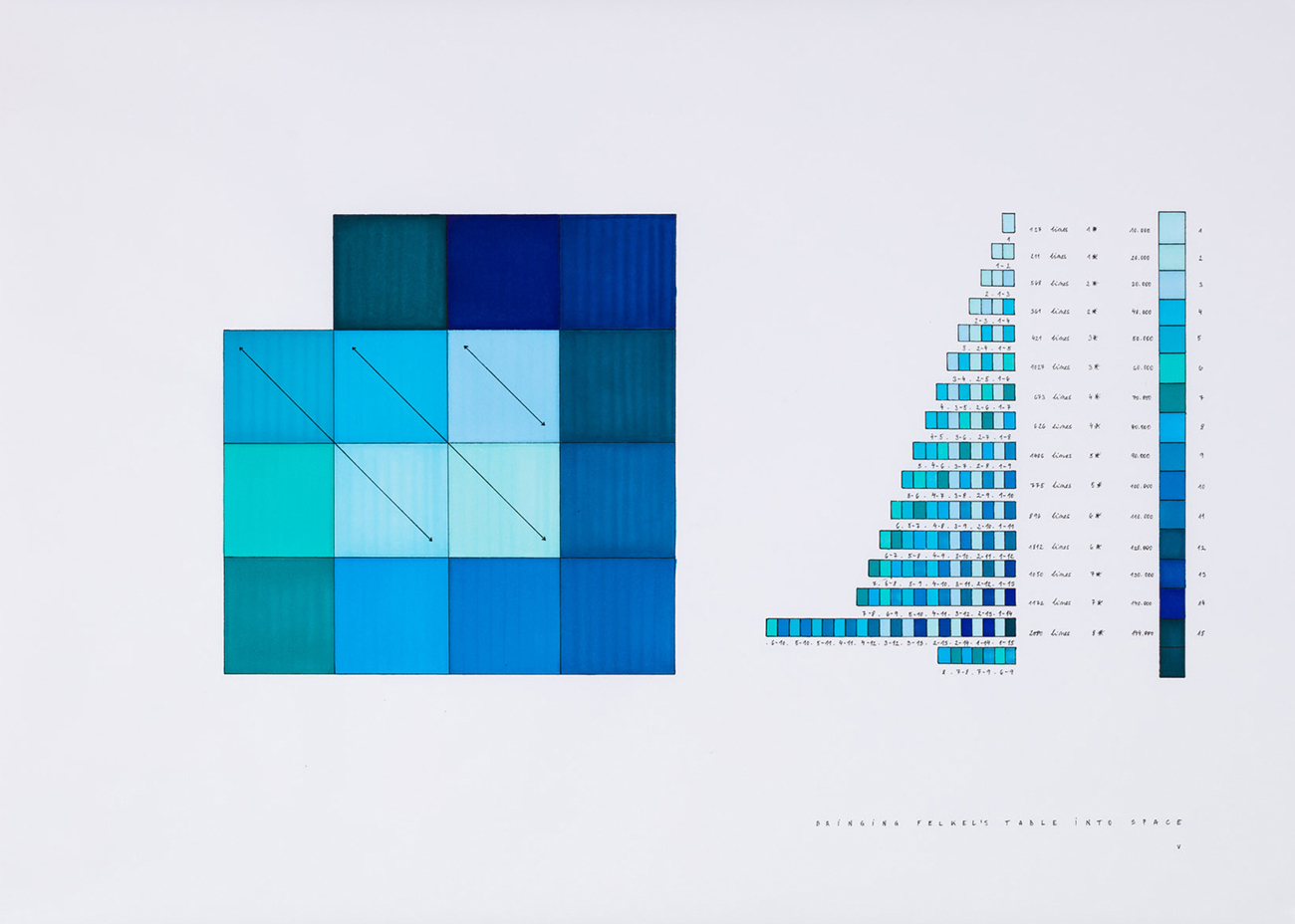
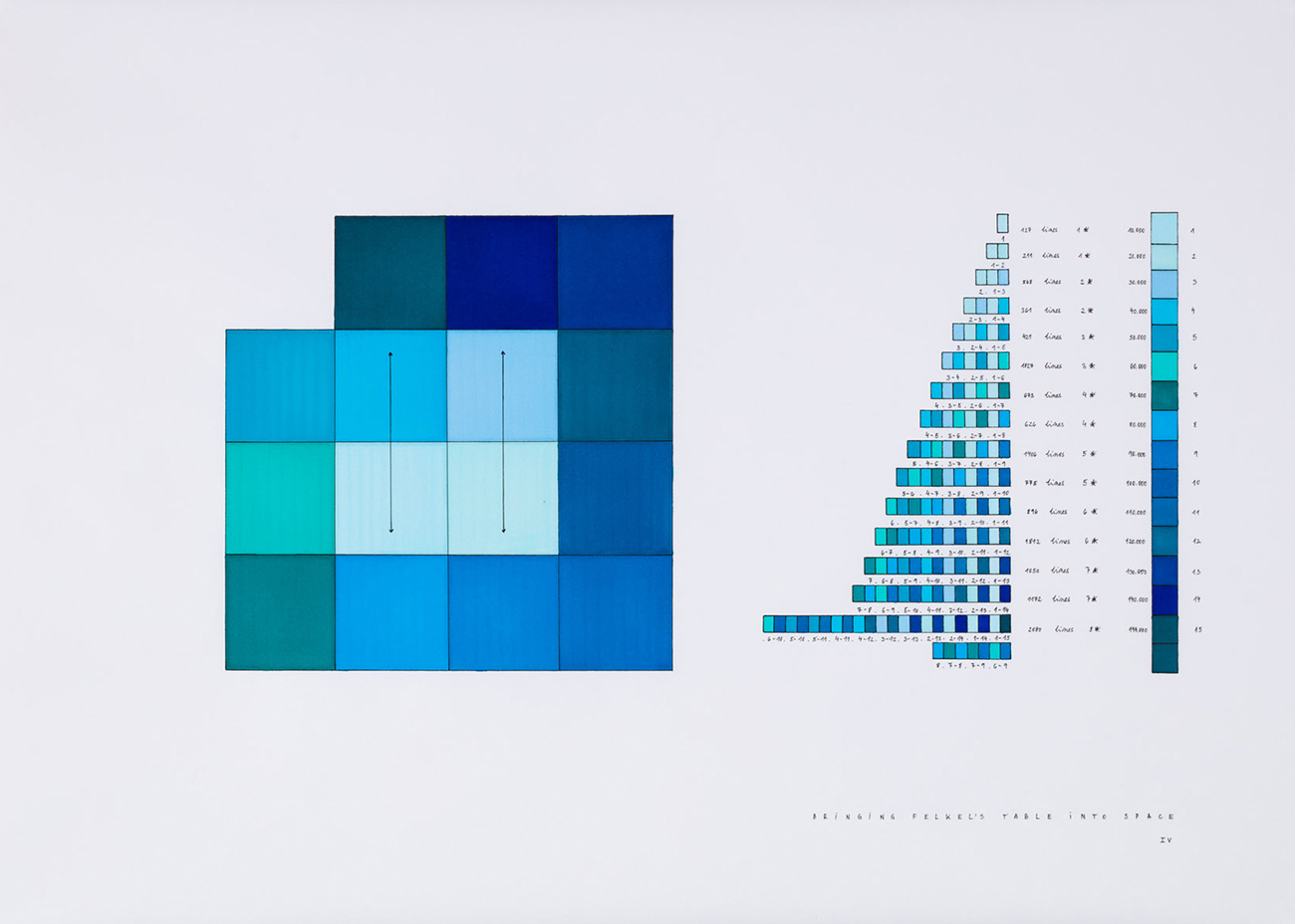
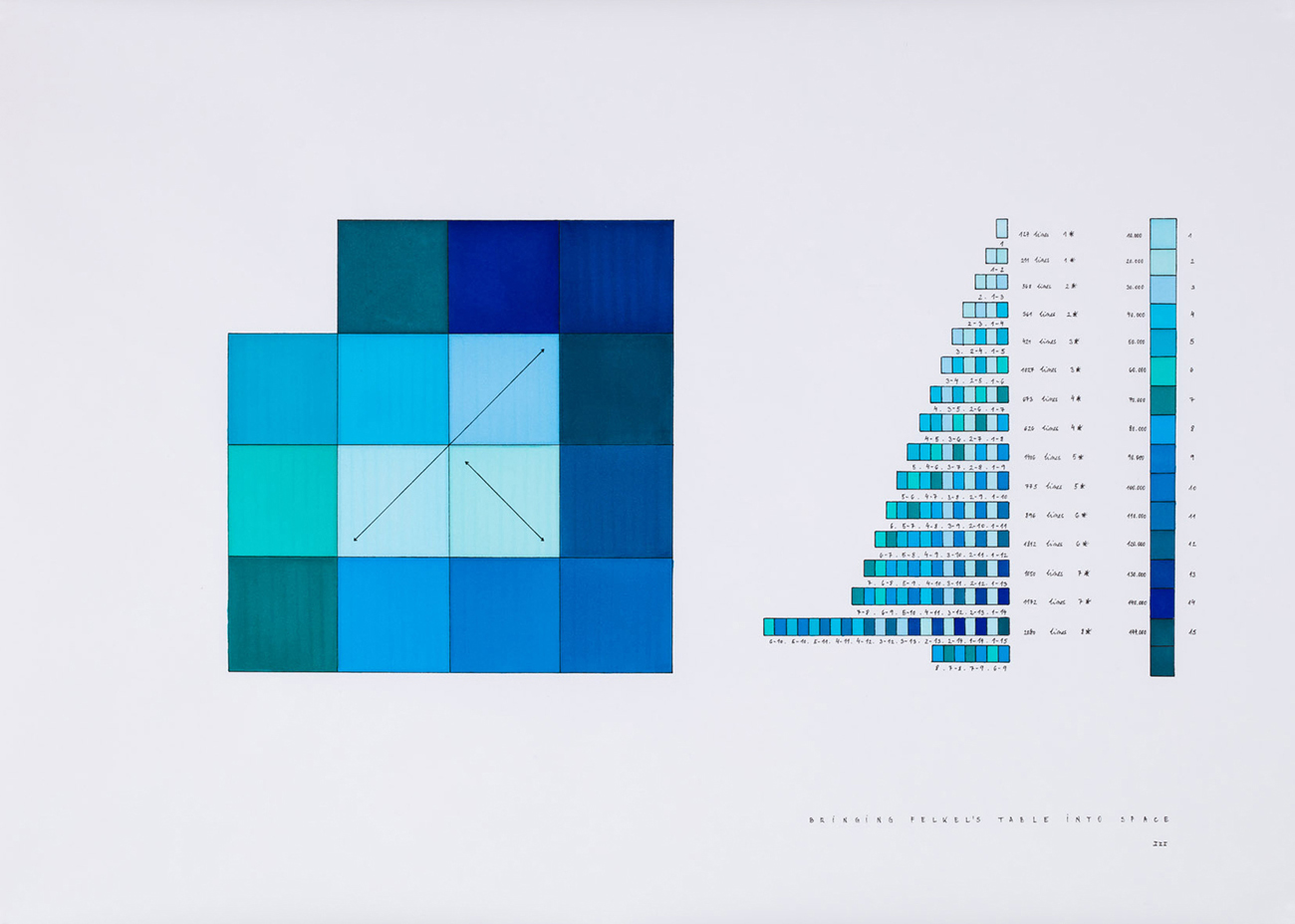
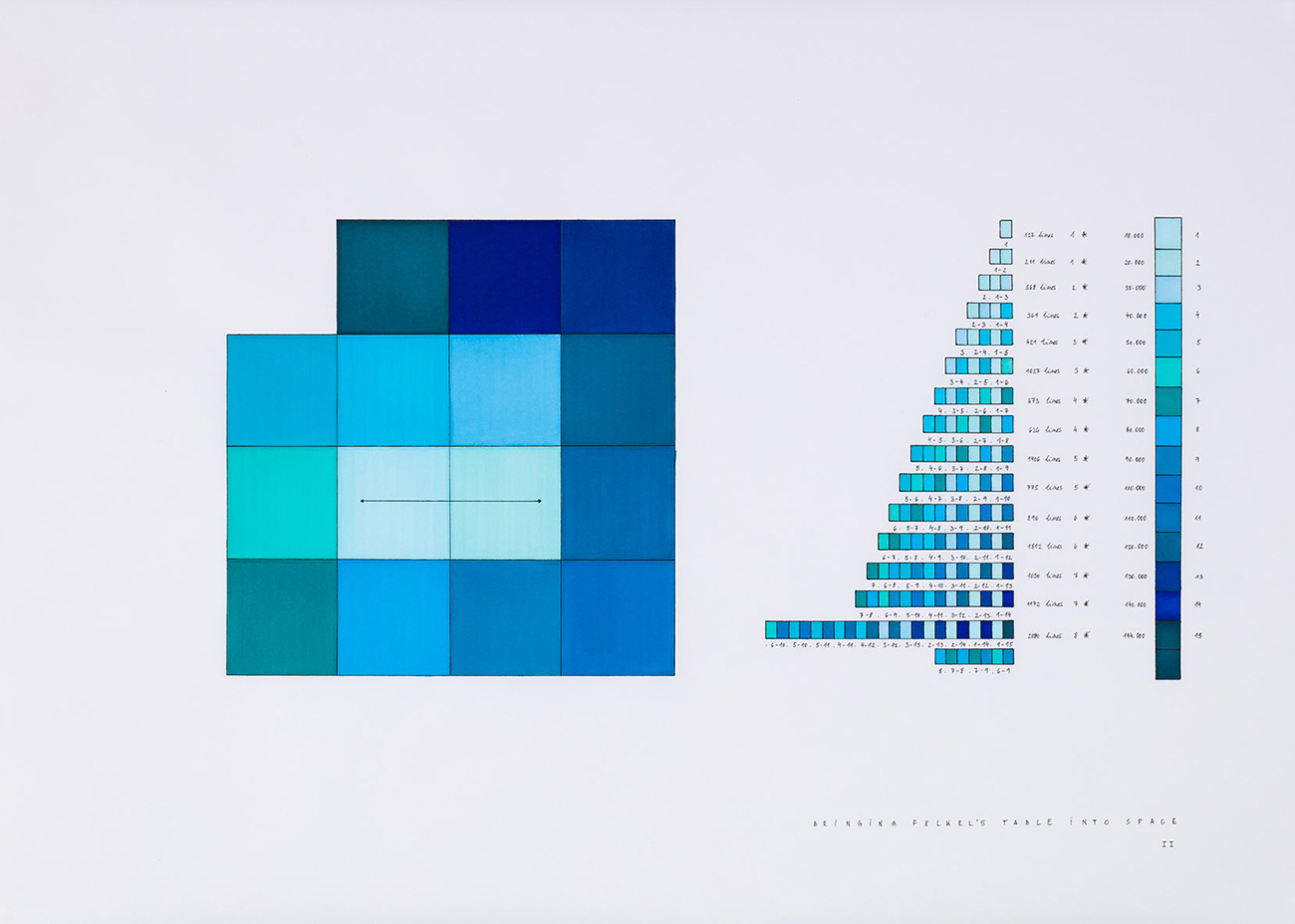
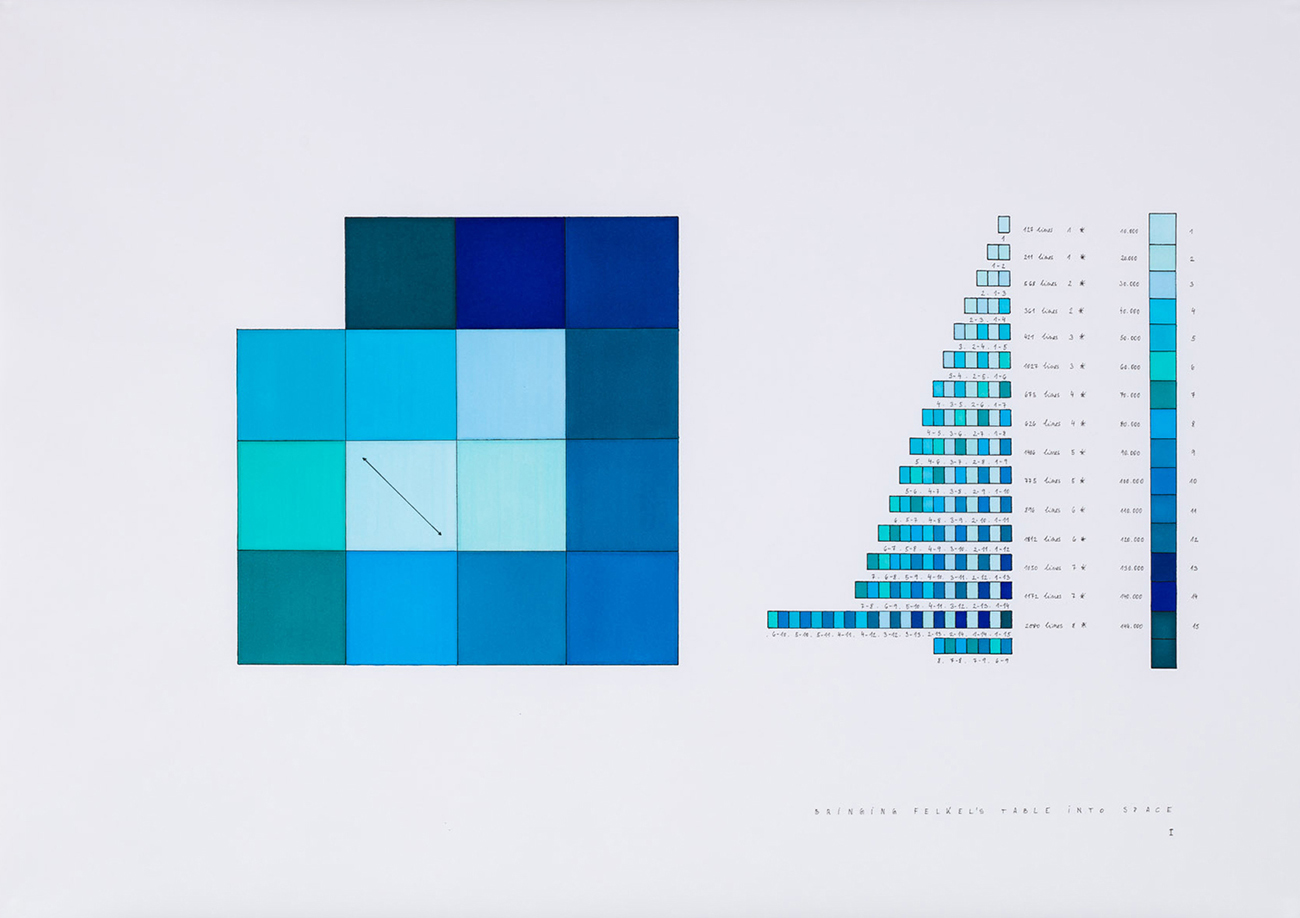
"Bringing Felkel ́s table into space" is a serie of 16 notations referring to the first list of prime numbers and factors up to the number 144,000, written by Anton Felkel in 1776. Each of them represents the area of a 15 square meters diagram that visualizes the decomposition of a number in possible pairs of prime numbers which, if summed up, come to a same result. This is related to RSA, one of the first Public-Key Cryptographic system is based on the challenge to decompose a very large number in two prime factors.
In mathematics, a prime number is a natural number greater than 1 that has only two distinct divisors: itself and 1. On the contrary, composite numbers are natural numbers that have some natural divisor aside from themselves and 1 and therefore, can be factorized. Factoring a number means simplifying its expression in terms of „fundamental blocks“, which are called factors. For example, factoring a composite number means writing it as a product of prime numbers.
The history of the construction, organization, correction, and publication of factor tables from 1657 to 1817, was a labour of a considerable magnitude that pushed mathematicians and calculators to organize themselves in networks. Around 1660, John Pells was the first English mathematician to motivate others to calculate a large factor table, for which he saw many applications. About a century later (1770), Johan Heinrich Lambert, a Swiss polymath, launched a table project that was to engage many human computers and mathematicians in the (re) production and extension of Pell‘s table. Anton Felkel was a Polish-Austrian mathematician, who devoted several years of his life to write lists of prime numbers and factors.
Felkel‘s table of factors was one of the several interesting projects spawned by Lambert’s call for tables. Calculating the interval from 1 to 144.000 took him two months of work and he hoped to reach 10 millions several years later.